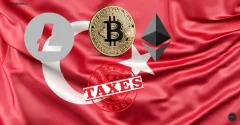The dollar index (DXY00) on Tuesday fell by -0.69% and posted a 2.5-month low. The dollar remains under pressure on expectations for the Fed to cut interest rates by -25 bp at Wednesday’s conclusion of the 2-day FOMC meeting. Also, increased expectations for Fed easing through year-end are bearish for the dollar. Losses in the dollar were contained after US retail sales rose more than expected and US manufacturing production unexpectedly increased.
The dollar is also being undercut by concerns over Fed independence, which could prompt foreign investors to dump dollar assets as President Trump attempts to fire Fed Governor Cook, and by Stephen Miran’s intention to be a Fed Governor while still technically holding his White House job on the Council of Economic Advisors.
Join 200K+ Subscribers: Find out why the midday Barchart Brief newsletter is a must-read for thousands daily.
US Aug retail sales rose +0.6% m/m, stronger than expectations of +0.2% m/m. Also, Aug retail sales ex-autos rose +0.7% m/m, stronger than expectations of +0.4% m/m.
The US Aug import price index ex-petroleum rose +0.2% m/m, stronger than expectations of +0.1% m/m.
US Aug manufacturing production unexpectedly rose +0.2% m/m versus expectations for a -0.2% m/m decline.
The US Sep NAHB housing market index was unchanged at a 2.75-year low of 32, weaker than expectations of an increase to 33.
The markets are pricing in a 100% chance of a -25 bp rate cut and a 5% chance of a 50 bp rate cut at the conclusion of Wednesday’s meeting. After the fully expected -25 bp rate cut at this week’s meeting, the markets are discounting an 84% chance of a second -25 bp rate cut at the next FOMC meeting on Oct 28-29. The markets are now pricing in an overall -68 bp rate cut in the federal funds rate by year-end to 3.65% from the current 4.33% rate.
EUR/USD (^EURUSD) on Tuesday rose by +0.88% and posted a 4-year high. Dollar weakness pushed the euro higher on Tuesday. Central bank divergence is also supporting the euro, as the markets view the ECB as largely finished with its rate-cut cycle, while the Fed is expected to cut rates by roughly three times by the end of this year. The euro added to its gains Tuesday on hawkish comments from ECB Governing Council member Simkus, who said the ECB is close to the end of its rate-cutting cycle.
Tuesday’s Eurozone economic news was mixed for the euro, with Eurozone Q2 labor costs increasing from Q1 and the German Sep ZEW survey expectations of economic growth unexpectedly rising. However, Eurozone July industrial production rose less than expected.
Eurozone July industrial production rose +0.3% m/m, weaker than expectations of +0.4% m/m, but June was revised upward to -0.6% m/m from -1.3% m/m.
Eurozone Q2 labor costs increased to +3.6% y/y from +3.4% y/y in Q1.
The German Sep ZEW survey expectations of economic growth unexpectedly rose +2.6 to 37.3





